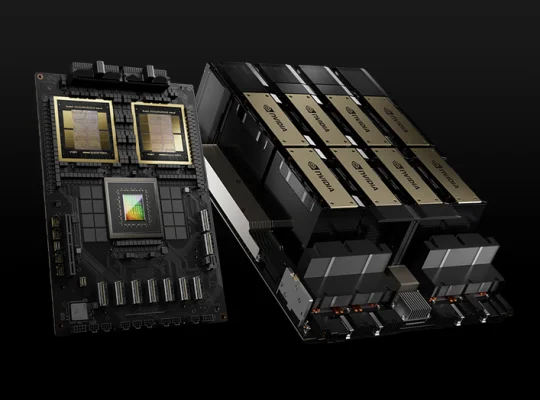NVIDIA, primarily known for its powerful GPUs, is making a significant impact on restaurant automation by providing the underlying AI computing platforms, software, and tools that enable intelligent robots and advanced AI systems to operate within the demanding environment of commercial kitchens and drive-thrus. Their role is not in building the robots or the specific restaurant software applications themselves, but rather in powering the “brains” of these automated solutions.
Here’s how NVIDIA AI is influencing restaurant automation:
1. Powering AI-Driven Robotics:
GPU Acceleration for Robotics: Robots, especially those designed for complex tasks like flipping burgers (e.g., Flippy from Miso Robotics) or assembling orders, require immense computational power for real-time perception, motion planning, and decision-making. NVIDIA’s GPUs provide the necessary parallel processing capabilities to run sophisticated AI models for:
- Computer Vision: Robots need to “see” and identify ingredients, monitor cooking progress, and detect anomalies. NVIDIA’sMetropolis platform and other vision AI SDKs enable high-accuracy object recognition, tracking, and analysis.
- Motion Planning and Control: Moving robotic arms smoothly and precisely in a dynamic kitchen environment is challenging. NVIDIA’sIsaac Robotics Platform (includingIsaac Sim for simulation andcuMotion for motion planning) provides the tools for developers to train and deploy robots that can perform intricate tasks with speed and accuracy, reducing food waste and improving throughput.
- Reinforcement Learning: Training robots to perform tasks like frying or grilling involves extensive data. NVIDIA’s platforms accelerate the training of these reinforcement learning models, allowing robots to learn and adapt to various cooking scenarios.
Edge AI Deployment: Many restaurant automation solutions need to operate locally at the “edge” (i.e., directly in the restaurant) to ensure low latency and continuous operation even without constant cloud connectivity. NVIDIA’s embedded AI platforms (likeJetson) and optimized software (likeNVIDIA NIM microservices) enable AI models to run efficiently on these edge devices.
2. Enhancing Conversational AI for Order Taking:
Speech Recognition and NLP: NVIDIA’sRiva SDK is a GPU-accelerated speech and translation AI platform that is crucial for natural language understanding in drive-thrus and voice ordering systems. Riva enables:
- High Accuracy: Processing diverse accents, background noise, and natural conversational patterns to accurately capture orders.
- Real-time Processing: Ensuring minimal latency between a customer speaking and the system understanding and responding.
- Customization: Allowing restaurants to fine-tune language models for their specific menus and jargon.
Generative AI for Personalized Interactions: NVIDIA’sNeMo framework, used for building and deploying large language models, can be leveraged to create more sophisticated AI agents for customer service. This allows for:
- More natural conversations: AI systems can engage in more fluid dialogue, answer questions, and provide recommendations.
- Personalized upsells: AI can intelligently suggest complementary items based on current order, past preferences, or time of day.
3. Optimizing Restaurant Operations with Data & Analytics:
Computer Vision for Operational Intelligence: Beyond robotic control, NVIDIA-powered computer vision can be used to analyze video feeds from within the restaurant for:
- Queue Management: Identifying bottlenecks in drive-thru lines or service areas to optimize staffing and flow.
- Order Accuracy Verification: Visually checking if the prepared food matches the order before it’s handed to the customer, reducing errors and waste.
- Predictive Maintenance: Monitoring equipment for signs of wear and tear to proactively schedule maintenance, minimizing downtime.
Accelerated Data Science: NVIDIA’sRAPIDS suite accelerates data science workflows on GPUs. This helps restaurants:
- Analyze sales data faster: Gain quicker insights into customer trends, popular items, and peak hours.
- Improve demand forecasting: More accurately predict ingredient needs, leading to reduced waste and optimized inventory.
- Optimize staffing: Use AI to create more efficient staff schedules based on predicted demand.
Restaurant Intelligence & Performance Optimization: NVIDIA’s AI Enterprise platform and NIM microservices enable restaurant chains to deploy applications that analyze performance metrics across thousands of locations. This allows them to:
- Identify best practices: Learn what top-performing stores do differently.
- Generate customized recommendations: Provide managers with actionable insights to improve efficiency and customer experience.
Key Partnerships and Examples:
NVIDIA actively partners with major quick-service restaurant (QSR) brands and automation companies to implement their AI technologies:
- Yum! Brands (KFC, Taco Bell, Pizza Hut): Yum! Brands has a strategic partnership with NVIDIA to accelerate AI deployment across its vast network. They are using NVIDIA AI Enterprise and NIM microservices to power voice AI agents for drive-thrus and call centers, and are exploring computer vision for operational intelligence.
- Miso Robotics (Flippy): Miso Robotics integrates NVIDIA’s Isaac Robotics Platform and AI-powered vision technology into its kitchen automation solutions like the Flippy Fry Station. This enhances the robot’s speed, precision, and ability to handle various food products.
Overall Impact on Restaurant Automation:
NVIDIA’s AI technology is foundational to the rapid advancement of restaurant automation by:
- Enabling Complex Robotics: Providing the computational horsepower and software tools for robots to perform increasingly sophisticated tasks in the kitchen.
- Revolutionizing Customer Interactions: Making voice ordering and virtual assistants more natural, accurate, and efficient.
- Driving Operational Efficiency: Using AI to analyze data, optimize workflows, and predict demand, leading to reduced costs and improved throughput.
- Scaling AI Deployment: Offering a robust platform that allows restaurant chains to deploy and manage AI solutions at scale across numerous locations.
In essence, NVIDIA is providing the underlying technological muscle and intelligence that is allowing the restaurant industry to move towards a more automated, efficient, and data-driven future.
















